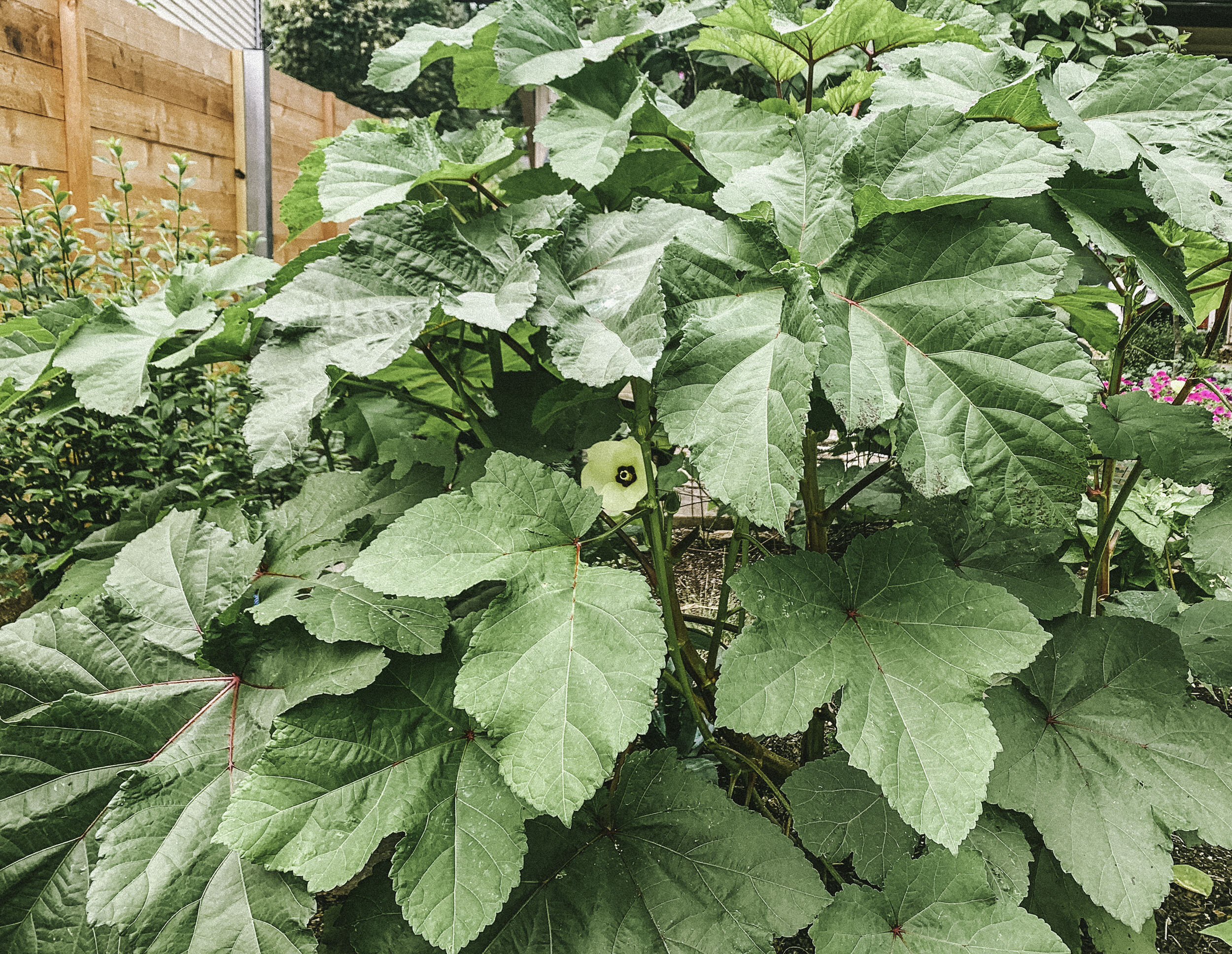Clemson Spineless Okra
Abelmoschus esculentus • Open-Pollinated • Organic • Heirloom • AAS Winner
Okra’s massive, edible flowers unfurl for one day only, then drop off as the pod forms.
JOY MAX SCALE ✦✦✦✦✧
Okra is one of the most beautiful plants you can grow. It thrives in heat when other crops struggle. Your biggest job with okra is keeping up with the harvests before the bountiful pods get too large & tough to be enjoyed.
JOY MAX QUALITIES
✦ Classic Southern Heirloom. The all-time, most popular okra variety was a 1939 All-America Selections winner and is still going strong 80 years later.
✦ Most okra varieties are covered with tiny spines that will irritate the skin similar to cactus. For this reason, Clemson Spineless is a winner. You should still always wear gloves when handling or pruning okra plants.
✦ okra sown in a row is a natural hedge. You can use it as a privacy screen or to create a backdrop. Clemson Spineless is dense and compact, making it suitable for both containers or in-ground plantings. Consider planting pool-side for a little privacy for swimmers or make a low hedge around a firepit or define another seasonal social area of your yard.
✦ Maybe the most versatile vegetable, okra adds body and flavor to soups, stews, and relishes, and can be fried, pickled, grilled, braised, steamed, and sautéed. Pick pods when young at 2½–3" long. The more mature and large the pods get, the tougher.
✦ You can eat the flowers: Deep fry, air fry, or eat them stuffed. Use fresh as a striking, hibiscus-looking garnish. They have a sweet, mild flavor.
✦ Okra does well in poor soil, even with lots of clay provided it drains. Add compost and an all-around fertilizer to prep the area before planting and again mid-season for a boost.
✧ At the end of the season, okra will start attracting aphids and the pods become tough.
PLANT HEIGHT: 24-36” PLANT WIDTH: 36" SEED SPACING: Direct sow 2" apart when soil is warm - at least 70°F (21°C). SEED DEPTH: 1/2" PLANT SPACING: 12-18" GERM: The plants should come up in 6 to 12 days. However, the colder the soil is, the more slowly the seeds will sprout. IDEAL TEMP: 70°-90°F DAYS TO MATURITY: 60 SOIL: Fertile, well-drained soil high in organic matter with a pH range of 6.0–7.5. LIGHT: Full Sun
Basic Growing Information
STARTING INDOORS (optional): Okra grows easily from seed once temps are above 70°. To make them germinate faster, soak the seeds in a glass of filtered water overnight. To start indoors, sow in 3" pots, or repurposed toilet paper rolls, 3 seeds per pot, 1/4" deep. When seedlings are an inch tall, snip the two weakest ones leaving one per pot. Do this if you are growing them in containers as well. Use a heat mat for fast germination and supplement with grow lights. Harden off and plant out 18" apart in an area that receives at least 5-6 hours of sunlight a day. Do not disturb roots. If you are in a colder area, you can use row cover to keep them warmer until temps are in the 70°s.
DIRECT SEEDING: After frost danger, sow 2" apart, 1/2" deep when soil is warm- at least 70°F (21°C). Thin to 12-18" apart.
HARVEST: Harvest promptly by clipping pods at 3-4" long to keep plants productive. Oversized pods become tough and inedible. Do not prune every day. Let the plant recover.
The massive leaves make for wonderful green mulch and weed suppressors. They are also a natural border or privacy screen.
Tips for Growing Okra
Okra is great for beginner gardeners. The most crucial element for growing is timing. It has to be warm outside (around 75°F preferably) and they must have lots of sun and well-drained soil.
Provide 1-2” of water a week, more if it’s super hot and dry. This is best done with a soaker hose or drip irrigation, apply right at the soil line keeping leaves dry.
Feed them to help them reach their full potential. Prep soil before planting with lots of compost and. Once plants are 18” tall, give them a second helping as that sustained growth requires lots of energy.
By summer, you’ll have more okra than you probably know what to do with. you need to harvest every 2-3 days. More than that and you’ll stress your plant. Less than that and the pods will grow woody and inedible. If that seems like to too much to handle in the heat of Texas summer, you can always just stop harvesting and the plant will eventually just stop producing. Or just maintain one plant and let the rest go.
They are prone to aphids as the season extends. Treat them with soap spray to keep them healthy. If it’s really bothering you, cut them at soil level (rather than yanking out) but only if you don’t think it will affect any other crops that are affected by the shade they provide. Old okra plants can be left to serve as “aphid hotels” attracting aphid-eaters like ladybugs and assassin bugs to the garden. I usually designate either a cucumber or an okra plant to serve in this capacity. They are great trap plants at this stage, drawing the aphids away from other crops.
Some okra varieties grow as tall as 15 feet! Once it gets really hot in August, pod production will finally slow down. Once this happens, or if you stopped picking weeks back, you can trim back the plants into more of a tall shrub shape, they will produce a smaller second round. Or maybe you’re done with okra by this point. Either way, I’m sure this okra has earned your respect.




